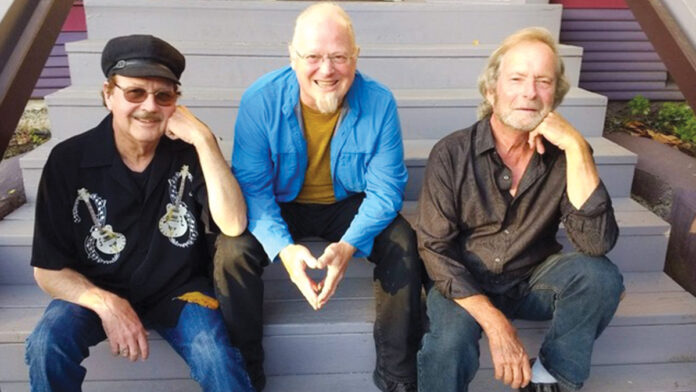Back in the late ’90s, a trio of San Jose indie rockers called Duster released two full-length records and a handful of EPs to little attention. They played dingy basement shows and never toured beyond the West Coast.
Instead of getting a bass player, they dragged an old organ to shows, where multi-instrumentalist Clay Parton would tap on the bass pedals for some added low end. The songs rarely had proper beginnings or endings. They were structure-less, fuzzed-out, bare ensembles of spacey noise—slow, dynamic and supremely lo-fi. If a song had vocals, it was treated as another instrument, not the primary focal point. But there was a beauty to the delicate chemistry and bubbling emotionality in these tunes, whether anyone knew about them or not.
In the early 2000s, the band faded away. Their record label went defunct at the same time, making copies of their records a rare commodity.
But the existing LPs made the rounds with a new generation of indie rockers. Duster’s take on ’90s slowcore was looser and more experimental than their peers. Like a grenade, the group’s inspiration had a delayed impact on several, now successful new bands like Girlpool, (Sandy) Alex G and Hovvdy.
“We were working in pretty simple modes. ‘How simple can this be, but still be devastating?’” Parton explains. “Part of our charm is sounding a little fucked up. We don’t really write songs and then record them. We use recording as part of the writing process.”
The cult of Duster was built without their music being available on streaming platforms. Old-fashioned word of mouth and chats in obscure music forums were the key. Copies of their albums were going for hundreds of dollars on eBay. The members of Duster found out about this niche demand and wanted to eliminate the “collector only” access to their music, so they arranged with indie label Numero Group to do a proper re-release of their catalog. When it came to fruition last March, demand was high—within a day, they sold out their limited pressing of 500 3-LP colored-vinyl box sets.
By then the band—to the surprise of the Duster cult—had recently started gigging again. The members had been talking about playing again for a while, a difficult task given that Parton lives in Santa Cruz and the other two members (Jason Albertini and Canaan Dove Amber) live in Portland. But with this new interest in the group—more interest than when they were together—there was reason. They played their first show in December 2018 in Brooklyn to an exuberant crowd of mostly 20-somethings, opening for Duster superfan (Sandy) Alex G.
In December 2019, Duster surprised their fans again by releasing a record of brand-new material, which they recorded on and off for a year and a half at Parton’s house mostly on a 4-track tape recorder, just like the old days.
“[Back then] all we had was a cassette 4-track machine, and super shitty drums and super shitty everything. We didn’t mind the immediate, disheveled sound of the 4-track. When we recorded on 8-track or even the first 16-track machine we got, it was the same approach. Smudged is our thing,” Parton says. “[For the new album] we did not consider any elaborate or excessive process.”
The group has continued to tour, including one show at the Ritz in San Jose in early 2019, which ended up being one of the band’s worst shows since getting back together.
“We played like shit. There were weird vibes, something wasn’t right. And not that many people were there. Maybe San Jose crowds still don’t want to pay for shows. Maybe some things never change,” Parton says. “It was like a true ’90s Duster experience, because we played some rough shows back then, too.”
But that show was also a turning point. It convinced them that they needed to take getting back together more seriously. They’ve since gotten a booking agent and have had other people handle the business end of things, so they could focus on incredible performances. Now as they tour, it’s become clearer that this new interest in the group wasn’t a fluke. They’re meeting a lot of kids that weren’t in the scene when they recorded most of their music, but have found a lot of meaning in what they do.
“Meeting people at shows is rewarding,” Parton says. “Sometimes a crowd of people drawn together are all bonded by that common thread of feeling not right, or isolated, alone, some variation on that theme. It’s almost like we are all taking care of each other, at least for a moment.”
Duster performs at 9pm on Friday, Feb. 28, at the Catalyst, 1011 Pacific Ave., Santa Cruz. $20/adv, $25/door. 423-1338.


























